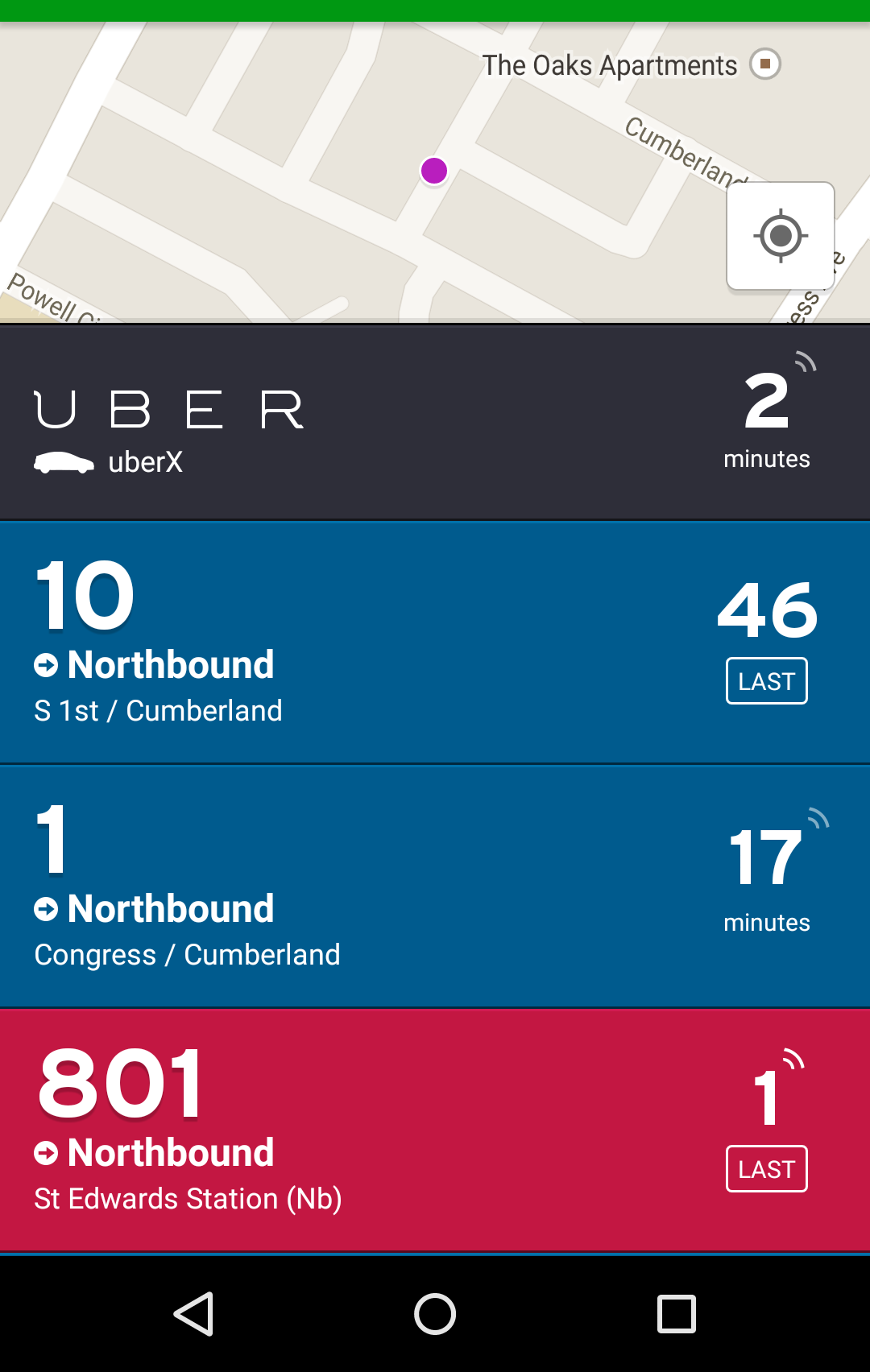In February, Capital Metro expanded the reach of real-time bus data from the 801 and 803 routes to the entire fleet. There have been a few pieces about the promise of real-time data: the piece of mind of knowing your bus is actually on its way, the ability to save wait time by only heading out to your stop at the last minute, the promise of real-time data to evaluate system performance. I’d like to add one more: improving practical frequencies.
As long-time readers know, one of my pet peeves is buses that run in the same direction, but pick up at slightly different locations. Two bus routes that each run 2x / hour and run together for some length could become one combined route running 4x / hour along that length if they picked up at the same location. In Austin, this is the case for the central transit corridor from downtown to UT / West Campus along the 1/3/5/19/801/803 bus routes.
Downtown, the problem I complained about in the linked piece has been resolved; almost all north-south bus routes through downtown are now running on the Guadalupe / Lavaca transit priority lanes. However, during SXSW, as I stayed in a short-term rental in between South Congress and South 1st, I had a less extreme version of the same effect. My location was halfway between the South 1st corridor, where the #10 bus ran and the South Congress corridor, where the #1 and #801 buses ran. In the pre-real-time data days, this would have meant that I would have had to choose between waiting for the 10, waiting for the 1, or waiting for the 801, all of which pick up at different stops.
With real-time data, I could just look at my free Transit app and see which bus was approaching next:

During morning rush hour from my rental to downtown, there were five buses per hour on the 801, two buses per hour on the 10, and two buses per hour on the 1. Prior to real time data, that equals five buses per hour, as I would have had to choose which stop I was going to wait at and would’ve chosen the one with the most buses. With the advent of real-time data, that equaled 9 buses per hour, as I could choose which stop actually had the next arriving bus. Obviously, this only applies in some locations. But where it does, it’s a major improvement!

http://instabus.org is a good unofficial app using CapMetro’s open data.